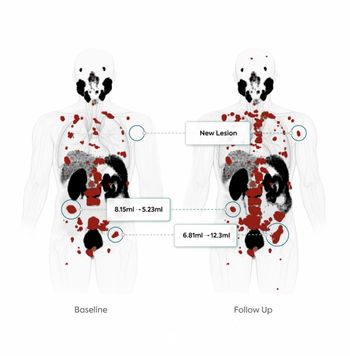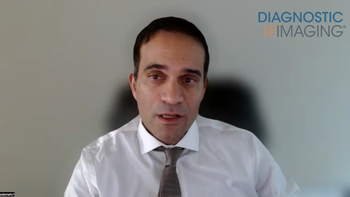
One Size Fits All. And, If You Believe That…
Think long-term when considering teleradiology hires.
A recent thread on a radiology forum began with a rad whose group was thinking of adding some daytime teleradiology shifts. He asked what might be an “appropriate daily rate” for a shift of X hours, reading Y RVUs, weekdays versus weekends.
Forums being what they are, I expected a lot more heterogeneity in the responses than there turned out to be. Sure, there was some typical naysaying (“That’s too many RVUs for that number of hours!” “Why can’t you guys do your own work? Teleradiology is evil”)…but most answers were along the lines of needing more detail. What sort of cases were to be read, was this to be full-time or part, etc.
It’s always reasonable to seek more information when analyzing a situation to give advice and solve problems – but especially when the analyzer(s) have abundant first-hand experience with the subject at hand and know what questions to ask. Rads know just how many variables can factor into this situation. What might make sense and be a perfect solution for one group might be a train wreck for another.
In other words, one size most definitely does not fit all.
It’s temptingly simple to approach that way: Hey, our group has more RVUs than it can handle or expects to in the near future. Whatever revenue those RVUs would bring us if we could read them, let’s offer something short of that for one or more telerads to pick up the slack. Anything extra we retain is gravy for us.
Sizing up a situation so simply makes for simplistic solutions. Failing to notice complexities—or foresee any coming down the line—has a way of making those solutions less elegant, even problematic to the point that they aren’t really “solutions” at all.
Such complexities can be as subtle as preconceptions—or lack thereof—in the minds of the group members thinking about hiring their own teleradiologists. Consider a question as simple as, “What do you want a telerad to do for your group?”
Most wouldn’t have an answer beyond taking care of their RVU allotment. Maybe give a little lip-service to things we’d all expect of teammates and employees: Read accurately, be helpful and courteous to referrers, show flexibility to accommodate quirks in the workflow and schedule, etc.
Digging just a little deeper, one might find that there are serious differences in philosophy. Ones that, if not addressed before shaping and instituting the group’s telerad-program, will be way harder to reconcile later on. Some soul-searching in advance could potentially reveal, if not iron out, some of these differences…but often doesn’t occur when it seems a simple solution is already in sight. (Or did you think that satisfaction of search—“happy eyes”—was only a thing when looking at images?)
Some framers of a telerad-constitution, for instance, might take it as a given that the offsite workers are not real members of the team and never will be. They’re being taken on as hired guns, and in exchange for the privilege of reading from home they should never expect to approach parity with onsite members in any way: compensation, authority, you name it.
Others might not see that as a tenable approach. They think everybody representing the group should consider themselves members of the team for the long haul—something that won’t really happen if they’re permanently treated as second-class citizens. Such a hired-gun telerad might not be enduringly loyal to the group, which could have all sorts of undesirable fallout…not the least of which is being that much more attentive to offers from other groups.
Similarly, there might be different ideas about what sort of work the telerads are going to be doing. Some onsite members of the group could be taking it as a given that the whole purpose of hiring offsite help is to churn through the overflowing worklists. Priority one: Get those cases read! Don’t waste time with long-winded, academic-grade reports.
But, again, other members of the group might be thinking differently. The telerads’ work is going to be in the name of the group, and the group should be maintaining certain standards. Is the group really going to hire telerads aimed at quantity over quality?
Some members of the team might even have hoped that leveraging telerad would let them take on brilliant subspecialists, “go-to” guys for tough MSK or neuro cases. Or a peds rad, since the group doesn’t currently have one. Such a maven might not mesh so well with the workhorse role that other members of the team have in their minds.
Months or even years down the line, when the telerads have been on board for a while, the onsite rads might come to realize that their differences in expectation are going to be difficult, if even possible, to reconcile. That can be downright disruptive if the group’s dissent is split in anything close to a 50-50 divide.
Meanwhile, depending on which members of the group handled the recruitment and interviewing, the telerads themselves might have been given differing expectations…and perhaps remember (whether correctly) that they were promised certain things that the group is now failing to deliver.
So, forget about “measure twice, cut once.” Mentally measure many times to the point that it feels overdone and you’re sick of the exercise. By all means, seriously consider hiring your own telerads. But make sure your considerations go beyond immediate concerns. Really dig in and have a long-term plan, and make sure everybody in your crew participates. Explore every hypothetical you can think of—and try to brainstorm ones you can’t—because what will matter to you tomorrow might not be on your radar today.
Even inquire with some folks currently doing telerad-work (or hire a consulting firm if you’ve got money to burn); pick their brains to see what matters to them, and where they’ve seen other groups stumble. That way, yours might not have to.
Follow Editorial Board member Eric Postal, M.D., on Twitter,
Newsletter
Stay at the forefront of radiology with the Diagnostic Imaging newsletter, delivering the latest news, clinical insights, and imaging advancements for today’s radiologists.



























